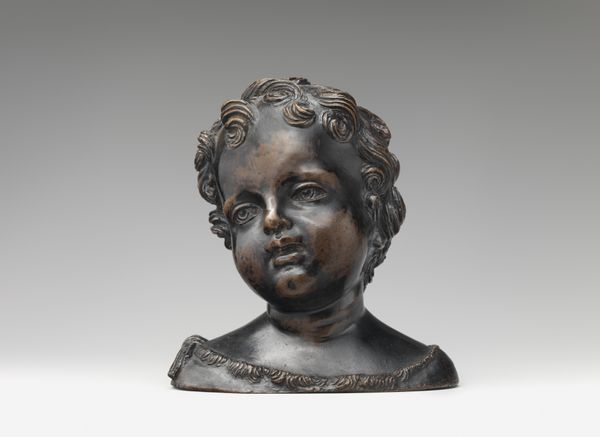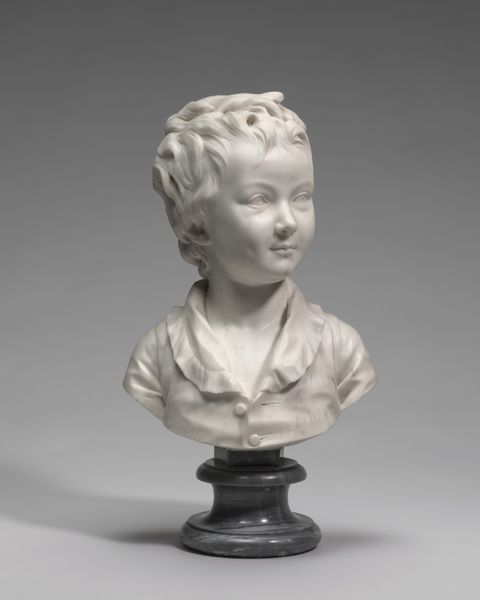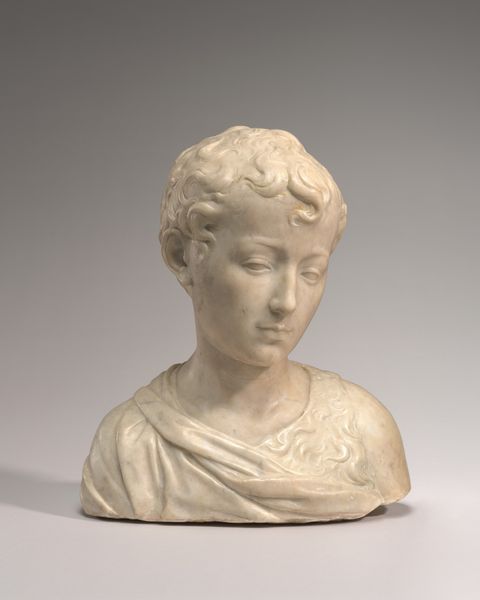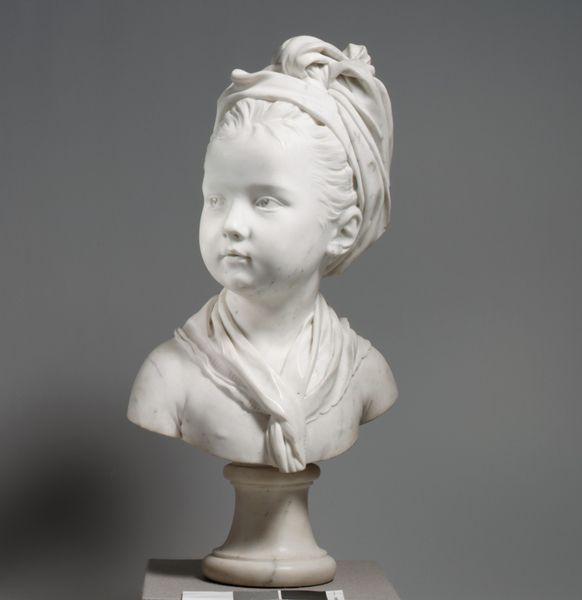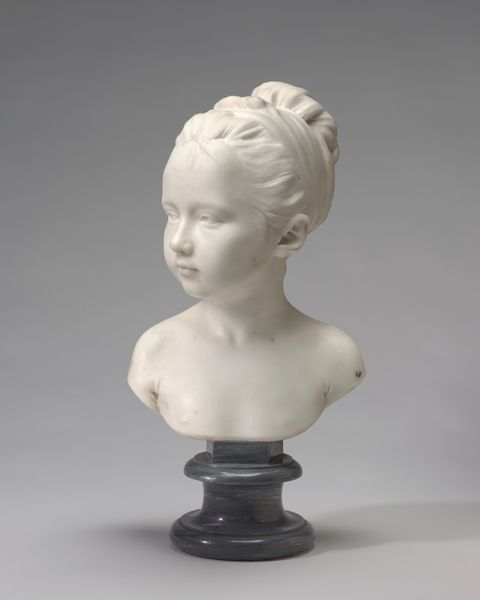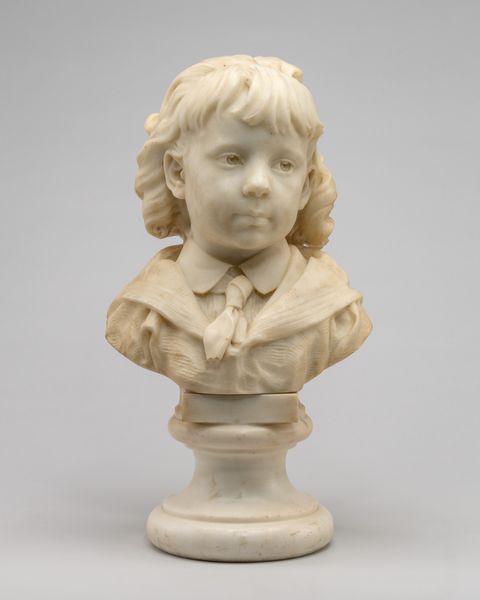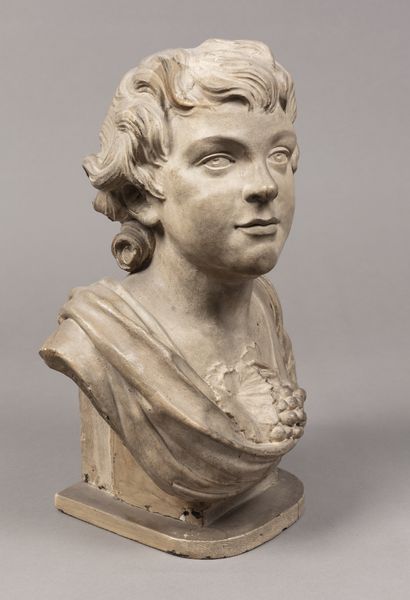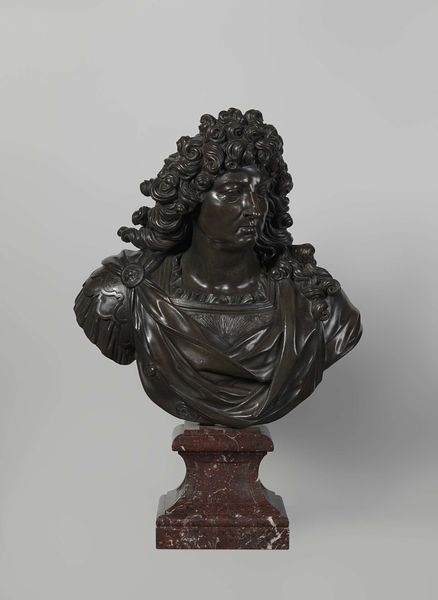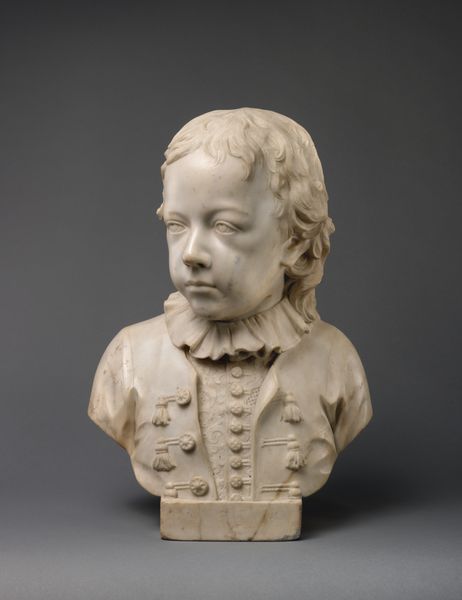
silver, sculpture
#
portrait
#
silver
#
baroque
#
figuration
#
sculpture
Dimensions: height 15.3 cm, width 11.3 cm
Copyright: Rijks Museum: Open Domain
Curator: Here we have a silver sculpture entitled "Jezus als jongeling," or "Jesus as a youth," created circa 1630-1650 by François Du Quesnoy. Editor: It’s remarkably serene, isn’t it? The soft glow of the silver and the slightly averted gaze… It suggests an inner world, a quiet contemplation. Curator: Yes, the piece exists very much within the Baroque style and highlights how power and divinity are so often linked to youth. Think of the cultural weight associated with youthfulness and innocence. How often is moral authority or revolutionary thought linked to youth movements? Editor: Absolutely. Silver, as a material, would have been specifically chosen for its purity, aligning the symbolic weight of the material with the subject represented: an idealized representation of the young Jesus. We see echoes of classical sculpture here, creating continuity across eras and belief systems. The simple drape echoes classical sculpture in idealized depictions of gods. Curator: This continuity also reflects the intersection of religious themes with contemporary political power. The choice to present Jesus in this classically inspired form subtly aligns Christian narratives with the long history of empires, asserting the Church's enduring power. Furthermore, what message is being sent when such valuable material, silver, is dedicated to sculpting a child, even a child of God? Editor: Well, you can find more explicit visual cues in his visage too. Du Quesnoy gives young Jesus very androgynous features. He's positioned at the intersection between childhood innocence and burgeoning divinity. This creates a specific emotionality, perhaps designed to be all the more potent to the religious adherents of the era. Curator: A reminder that identities, even divine ones, are constructed and imbued with meaning based on their specific social and historical moments. Editor: And that imagery carries power, accumulating significance over centuries. Reflecting on its use allows us to appreciate cultural values as they stand in both time and memory. Curator: Precisely! Looking closely unveils deeper, and sometimes difficult, truths about power, representation, and belief.
Comments
No comments
Be the first to comment and join the conversation on the ultimate creative platform.
